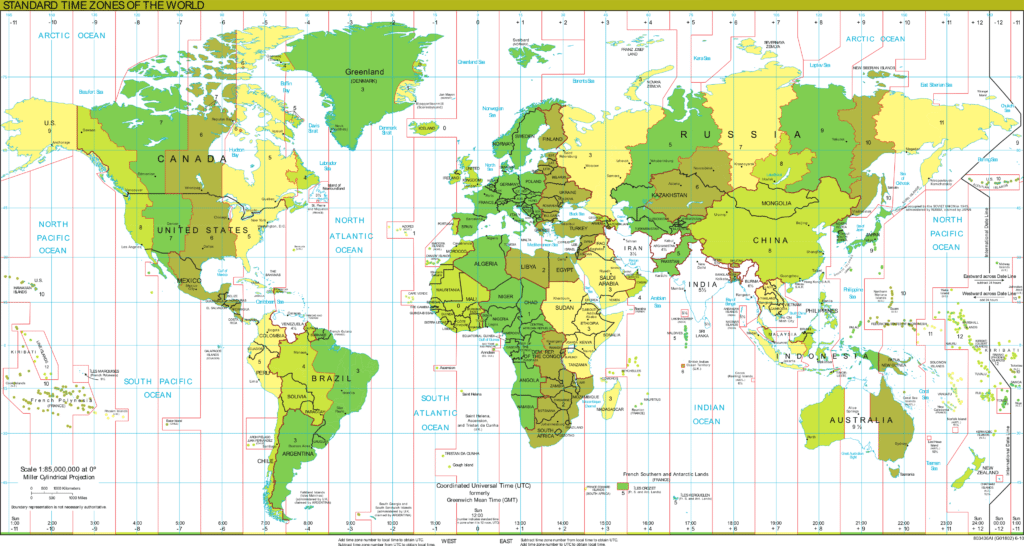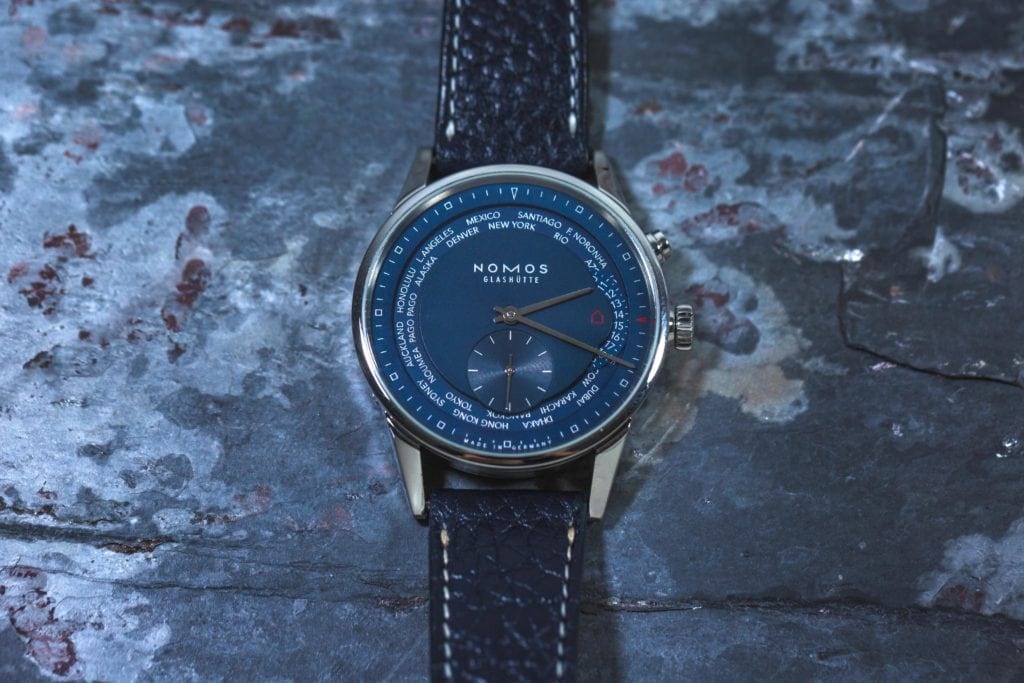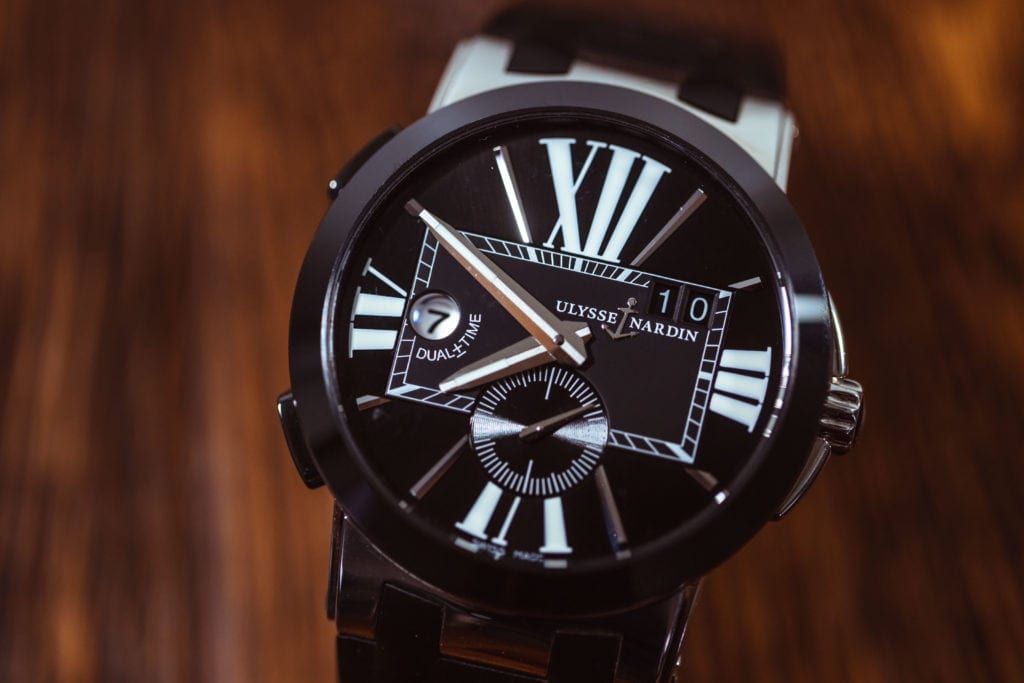A History of Standardizing Time
Before a unified time system was established, each city had its own local time. At one point in the United States, there were over 100 different local times. In those days, it was extra challenging for travelers to keep track of time. There were very few options for watches displaying more than one time zone. Double-time pocket watches tracked both local and railway time, and captain watches displayed local and homeport time. However, most travelers carried several watches to track time on their journey.

PHOTO CREDIT WIKIPEDIA
The ability to travel increased exponentially during the industrial revolution. It was then that the world took note of the importance of a more unified time system. In 1884, representatives from over twenty countries gathered in Washington D.C. for the Prime Meridian Conference. Here, they divided the globe into 24 time zones, each one hour apart.
Innovations Leading to the World Timer
Still, it wasn’t until the 1930’s that a watchmaker translated the new global time system into a timepiece. Watchmaker Louis Cottier was the first to develop a world timer for brands like Rolex, Patek Philippe, and Vacheron Constantin. His concept featured a traditional watch face in the center of the dial, displaying local time. He coupled this with a rotating 24-hour ring surrounded by the names of different cities. Cottier’s design continues to serve as the base for modern world timers.

Today, we know there are in fact 37 time zones in our world map. It hasn’t been until recent years that a watchmaker created a world timer that accounts for each. In 2011, Vacheron Constantin debuted the first wristwatch to tell time in all 37 time zones: the Patrimony World Time. Soon after, Glashutte Original developed their own versions, first with the Grande Cosmopolite Tourbillon and then the Senator Cosmopolite.
Dual Time and GMT
The establishment of a unified time system spurred the creation of the world timer. Similarly, the aviation boom of the 1950’s sparked the development of the dual timer and the GMT. Much like railway operators and ship captains needed to track time in multiple cities, pilots faced the same challenge. They needed a device that could tell time in their current city and their destination.

The dual timer and GMT helped solve the pilot’s problem. These two watches essentially perform the same function. However, they do so through different mechanisms. A dual timer displays two time zones simultaneously with a main dial and subdial. Some modern examples of dual timers include the Patek Philippe Nautilus Travel Time Chronograph and Jaeger LeCoultre Grande Reverso Duoface.
On the other hand, GMT watches use a 24-hour scale to indicate the second time zone. They’re typically comprised of a 24-hour track along the bezel or outside of the dial. This may be fixed or rotating. Then, a fourth hand indicates the second time zone along the 24-hour scale. Rolex was the first to pioneer the GMT. In 1954, they collaborated with Pan Am to develop the GMT Master. The GMT name comes from Greenwich Mean Time, known today as Coordinated Universal Time or UTC.
Picking the Best Timer for Your Needs

Are you a pilot or do you only tend to travel from your home to a single city? If so, a dual timer or GMT may be the most practical options for you. Dual timers are more straightforward and user-friendly, while GMTs can take a little more finesse to operate. Instead, are you an avid traveler, often visiting multiple destinations on a single journey? Then nothing quite compares to the capabilities of the world timer.
Get More Articles Like This in Your Inbox
We're constantly creating great content like this. So, why not get it delivered directly to your inbox? By subscribing you agree to our Privacy Policy but you can unsubscribe at any time.







Hayman Tam | November 19, 2018
|
Always been a fan of GMT watches, sTarting with my Rolex Explorer II bought in Hong kong (1987) and later on a omega deville GMT (2006). But now as i travel a lot more in retirement, I find it safer aNd more Convenient to wear my casio GPs g-shock Mtg-g1000.
Btw, Any GMT works as a compass in the northern hemisphere – point the 24 hour hand at the sun, and the 12 on the dial points to North.